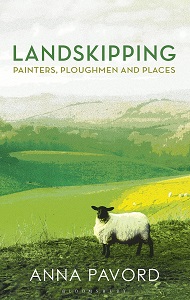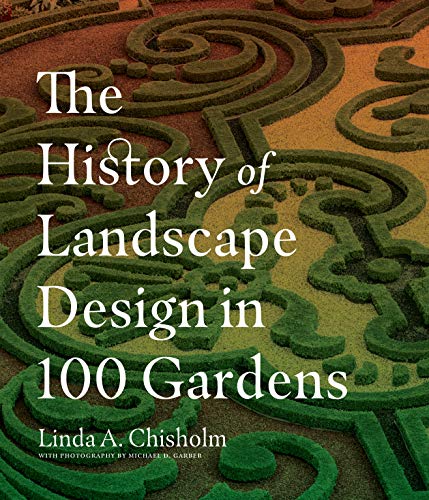 After moving from a lifetime in New York City to the flatlands of central Illinois, my friend Cecile decided to buy landscapes painted by local artists to teach the family how to look at the land around them that seemed oppressively monotonous. That was my introduction to the idea of seeing landscapes from different perspectives. Landskipping shows the reader two ways of looking at rural Britain that emerged in the late 18th and early 19th centuries. Along the way, the book describes many engaging places.
After moving from a lifetime in New York City to the flatlands of central Illinois, my friend Cecile decided to buy landscapes painted by local artists to teach the family how to look at the land around them that seemed oppressively monotonous. That was my introduction to the idea of seeing landscapes from different perspectives. Landskipping shows the reader two ways of looking at rural Britain that emerged in the late 18th and early 19th centuries. Along the way, the book describes many engaging places.
In the 18th century English travelers began going to the Lake District and other wild places to experience the views. They were guided by writers and painters who encouraged them to look for locations that were sublime or beautiful or just picturesque, each with its own characteristics. A sublime view, for instance, inspired awe or even terror. As tourism grew, specific locations were described to achieve various effects. Crosses were carved in the turf to make clear exactly where to stand get the best result.
Humans could not resist enhancing the views. In the Lakes the Earl of Surrey had a boat fitted with 12 cannons and fired them so his guests could enjoy the awe-inspiring effect of the echoes. William Gilpin wrote a series of Observations (published between 1782 and 1809) on his travels, including sketches of the scenes he described. In some drawings he modified the actual views so they better fit his criteria for the picturesque, much to the frustration of the tourists who tried to match the view to his sketch. Learning about the rage for scenic travel in this period made me understand better Elizabeth Bennett’s disappointment in Pride and Prejudice, when her trip to the Lake District was aborted.
In the second major section of Landskipping, Pavord contrasts tourist viewing for Romantic effect with that of travelers in the same time period, sometimes looking at the same scenes, with an eye to the productivity of the land. The newly created Board of Agriculture commissioned reports on the condition of farming, and the men sent to write them were “pro-landowner, pro-enclosure,” looking to “improve” land, “maximise profit and . . . use labor in the most efficient way” (p. 97). Thomas Lloyd, for example, noted that “’little attempt was made to feed [the soil] with manure or practice the rotation of crops’” (p. 98).
William Cobbett, in his Rural Rides, articles originally published from 1821 to 1826 in the “Political Register ,” described the landscape as it related to the people who worked there. He loved woodlands because they provided easy to obtain fuel for the laborers, who often lived in extreme poverty. Woods, he wrote, “’furnish . . . nice sweet fuel for the heating of ovens; . . . material for the making of pretty pigsties . . .; for making little cow sheds; . . . for the sticking of pease and beans in the gardens, and for giving everything a neat and substantial appearance.’” He added that the “’little flower gardens . . . and the beautiful hedges of thorn and privet; these are objects to delight the eyes, to gladden the heart’” (p. 112). The productive landscape was to him also beautiful.
Along with further meaty chapters on “Rooks and Sheep,” and on the gradual loss of common land, Pavord includes meditations on her own long connection to and admiration for the Dorset landscape she lives in. She leaves the reader with lots of intriguing information about rural Britain in the 18th and 19th centuries and with new understanding of the benefits of gazing at landscapes from multiple angles.
Published in the Leaflet for Scholars, December 2021, Volume 8, Issue 12.
![[Olmsted in Seattle] cover](https://depts.washington.edu/hortlib/graphix/OlmstedinSeattlereview.jpg)
 Ugh. That was my first reaction to the title “The History of Landscape Design in 100 Gardens.” I immediately pictured a dull, dusty history book.
Ugh. That was my first reaction to the title “The History of Landscape Design in 100 Gardens.” I immediately pictured a dull, dusty history book. “Designing with Palms” by Jason Dewees is by a San Francisco based author, who profiles garden motifs evoked by palms across the country. For instance, Chamaerops humilis suggests a Mediterranean garrigue, an ecosystem with low shrubs, including rosemary and lavender, like one might find in a Seattle landscape.
“Designing with Palms” by Jason Dewees is by a San Francisco based author, who profiles garden motifs evoked by palms across the country. For instance, Chamaerops humilis suggests a Mediterranean garrigue, an ecosystem with low shrubs, including rosemary and lavender, like one might find in a Seattle landscape. In “Visionary Landscapes,” Kendall Brown profiles the lives and gardens of five designers born in the mid-20th century – three in Japan, two in the United States – who have practiced their craft primarily in North America. The new gardens they have designed, mostly in the last 30 years, are pushing the evolving concept of Japanese-style gardening.
In “Visionary Landscapes,” Kendall Brown profiles the lives and gardens of five designers born in the mid-20th century – three in Japan, two in the United States – who have practiced their craft primarily in North America. The new gardens they have designed, mostly in the last 30 years, are pushing the evolving concept of Japanese-style gardening.